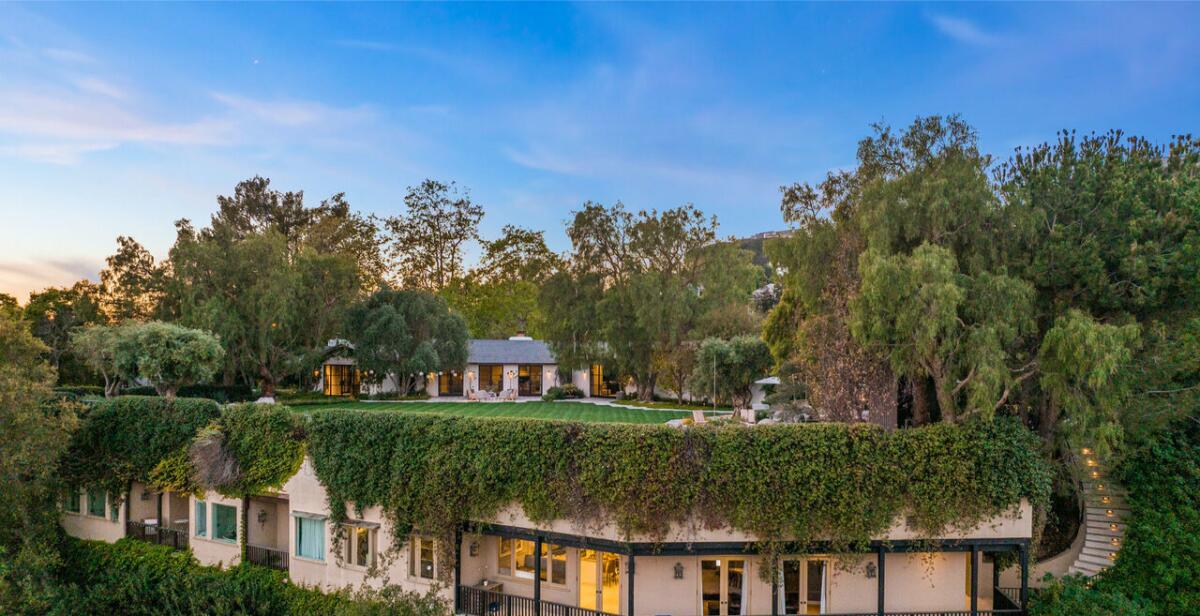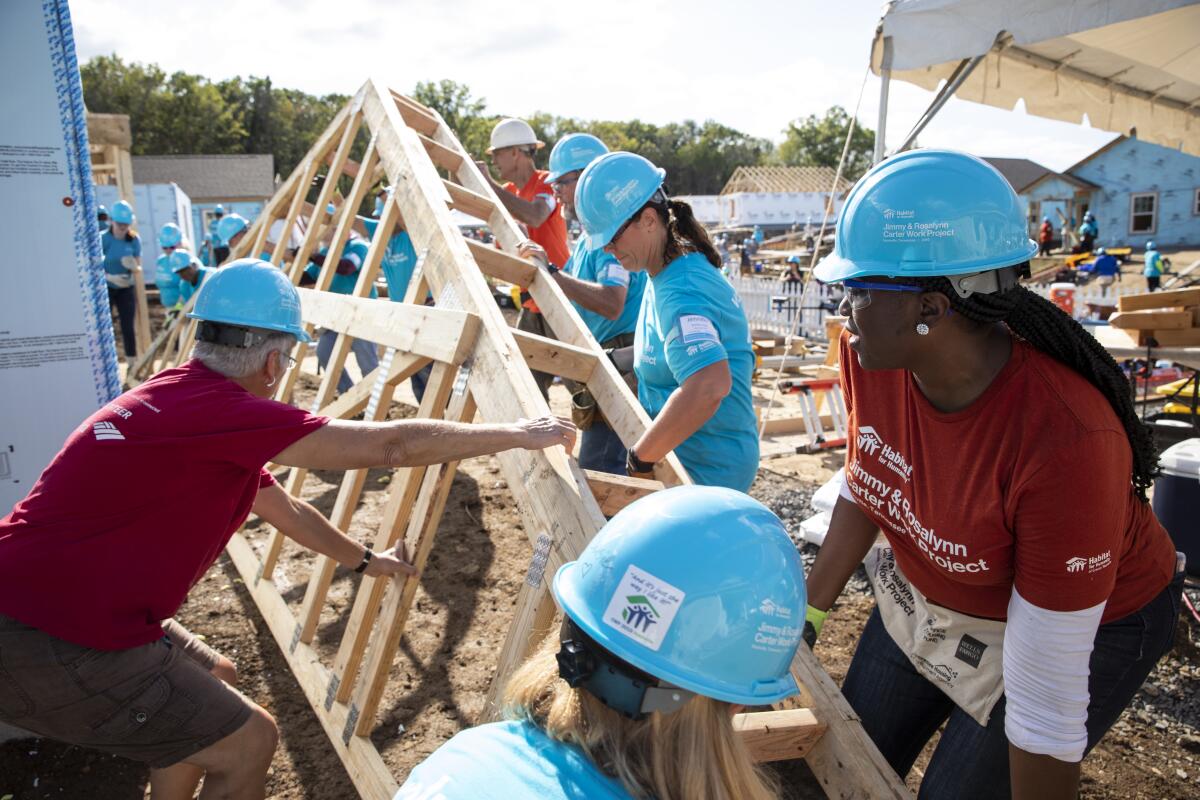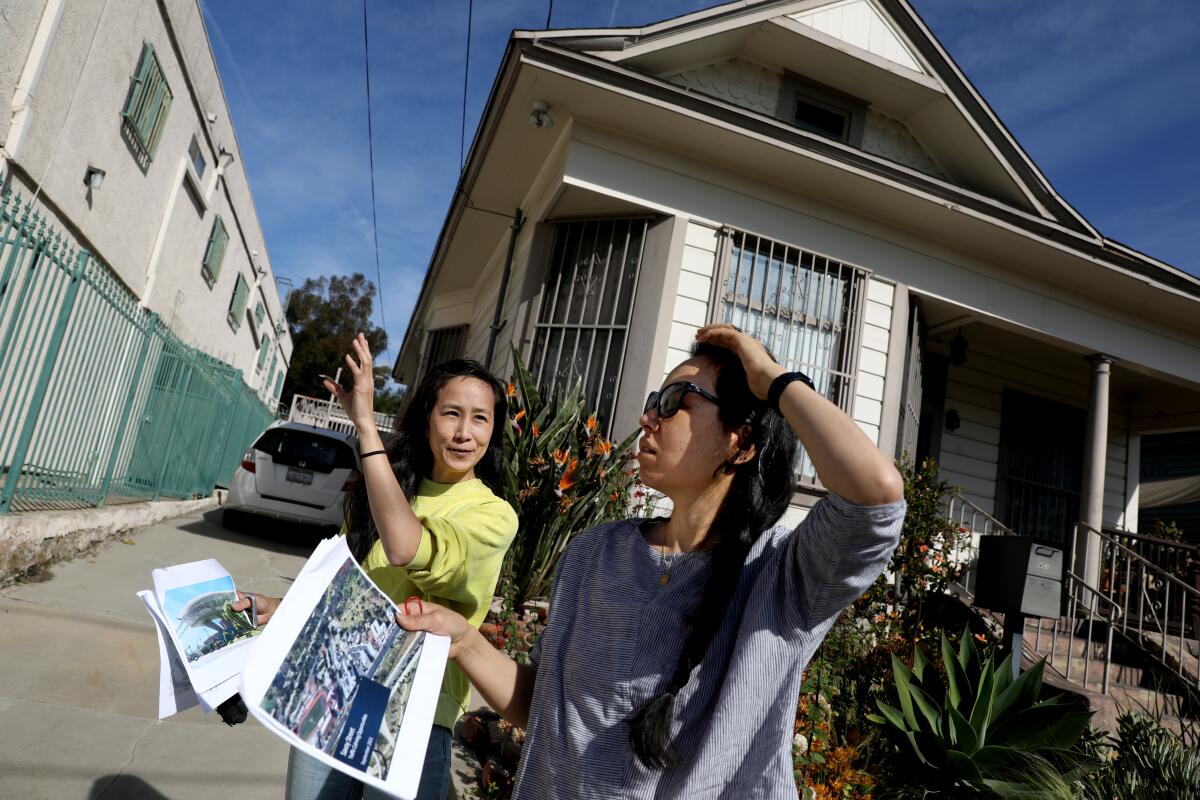Real Estate newsletter: ‘Pedophile Island’ comes to market in the Caribbean

- Share via
Welcome back to the Real Estate newsletter. We got a doozy of a listing this week, as Jeffrey Epstein’s private island — a den of alleged illegal activity over the years — surfaced for sale in the Caribbean.
The tropical compound has been under intense scrutiny after prosecutors alleged that the late financier brought underage girls there to be sexually abused by himself and his associates, which earned it the nickname “Pedophile Island.”
The real name is Little St. James, and it’s being marketed as an exotic retreat where buyers can enjoy “unparalleled access to the Caribbean’s most elite activities.” Paired with Epstein’s other island, a larger property called Great St. James, the compound is on the market for $125 million.
In California, Adam Levine offered up a prized property. The Maroon 5 frontman and his wife, model Behati Prinsloo, are asking $57.5 million for their Pacific Palisades estate, and if they get their price, it’ll be one of the most expensive deals the coastal community has ever seen.
Over in Hollywood Hills, we saw a listing that’s a bit cheaper, but just as stylish. It’s a Richard Neutra work — the Loring House, to be specific — and it’s up for grabs at $8 million. In addition to the main home designed by the famous modernist architect, the small compound also comes with a chic guesthouse with greenhouse-style windows designed by Culver City-based architect Steven Ehrlich.
Enough about the rich and famous; let’s just talk about the rich. MacKenzie Scott, Jeff Bezos’ ex-wife who’s worth about $50 billion after their divorce, donated a cool $436 million to the home-building nonprofit Habitat for Humanity. It’s Scott’s largest publicly disclosed donation since she pledged to give away a majority of her wealth in 2019, and a representative for the organization said the gift will go toward increasing the supply of affordable housing — especially in communities of color.
Finally, The Times explored the downsides of a seemingly cool idea. It was hard not to start fantasizing when the Dodgers announced possible plans for a gondola that would fly fans from Union Station to Dodger Stadium in just seven minutes. But for the Angelenos living under the gondola line, it would add even more cacophony to an already crowded neighborhood.
While catching up on the latest, visit and like our Facebook page, where you can find real estate stories and updates throughout the week.
Epstein’s islands are on the market

Jeffrey Epstein’s Caribbean compound — dubbed “Pedophile Island” after prosecutors alleged that the disgraced financier brought underage girls there to be sexually assaulted by Epstein and his associates — is on the market for $125 million.
Found in the U.S. Virgin Islands near the southeast coast of St. Thomas, the tropical retreat consists of two islands: Great St. James and Little St. James, the latter of which is where the assault of minors was alleged to have taken place. The pair combine for 230 acres.
The listing is held by Bespoke Real Estate, a luxury brokerage whose website says the compound has “unparalleled access to the Caribbean’s most elite activities” and offers potential buyers the chance to move in, renovate or rebuild. The brokerage had no comment on the listing.
Epstein, a convicted sex offender who died by apparent suicide in a New York jail in 2019, bought Little St. James for $7.95 million in 1998 and spent the following years turning the 70-acre spread into a palm-topped paradise complete with a sprawling stone mansion topped with a turquoise roof, four guest villas, two pools, a gym, tiki hut, dock and helicopter pad. Other flourishes include a life-size Holstein Friesian cow statue.
Singer chases a huge price in the Palisades

Maroon 5 frontman Adam Levine and his wife, model Behati Prinsloo, are chasing history in Pacific Palisades, listing their prized compound for $57.5 million.
If they get their price, it’ll be one of the most expensive sales the coastal community has seen. The current crown belongs to mega-mansion developer Ardie Tavangarian, who sold a spec house last year for $83 million.
Levine and Prinsloo are the latest in a long line of celebrities to own the estate, which covers more than three acres of private, park-like grounds. They bought it from Ben Affleck and Jennifer Garner for $31.95 million in 2018, and before that, it was owned by prolific actor Gregory Peck and Oscar-winning producer Brian Grazer.
Although the price is $25 million more than what Levine and Prinsloo paid for it, the jump reflects a more competitive market and also a significant remodel that the couple oversaw during their stay. No strangers to flipping homes, they bought a Beverly Hills mansion for $33 million in 2018 and flipped it to Ellen DeGeneres a year later for $45 million.
A pristine Neutra asks $8 million

The newest Richard Neutra residence to surface for sale is in the Hollywood Hills, where the architect’s famous Loring House just hit the market for $8 million.
Built in the 1950s, the ultra-stylish estate is owned by beauty mogul Cassandra Grey, founder of Violet Grey and widow of Brad Grey, the movie producer who ran Paramount Pictures for 12 years. For her work in the industry, she’s been dubbed “L.A.’s high priestess of beauty.”
The modernist gem — a pristine example of Neutra’s boxcar style — is a fitting home for Grey. Neutra designed it for dancer and choreographer Eugene Loring. The small compound also includes a guesthouse built by Steven Ehrlich, a Culver City-based architect who designed the UC Irvine Contemporary Arts Center.
Considered a boxcar-style home for its thin, rectangular floor plan and retractable walls of glass, the home is filled with Neutra’s fingerprints. The facade features a broad roof overhang and spider-leg columns. Inside, a living room fireplace adds a classic Neutra support beam.
Bezos’ ex makes a big donation

MacKenzie Scott has donated $436 million to Habitat for Humanity International and 84 of its U.S. affiliates — the largest publicly disclosed donation from the billionaire philanthropist since she pledged in 2019 to give away the majority of her wealth, writes Glenn Gamboa.
“We could not be more excited to get the gift at a time when, in some ways, the state of housing affordability is the worst that it has been in modern times,” Jonathan Reckford, Habitat for Humanity International’s chief executive, told the Associated Press. His group received $25 million from Scott and her husband, Dan Jewett, with the remaining $411 million to be distributed among Habitat’s local affiliates.
Scott’s donation amounts to nearly 8% of the $325 million in donations that Habitat for Humanity International received in its 2020 fiscal year.
Reckford said Habitat for Humanity will use Scott’s donation of unrestricted funds to increase the supply of affordable housing, especially in communities of color. Though they approach the problem in varying ways, most local affiliates will pursue projects in their communities, while the international group will focus on broader advocacy and efforts to build homes for working-class families.
A Dodgers gondola could be a gentrifier

With their Chinatown home boxed in by a freeway entrance, apartment buildings, a high school and a major boulevard to downtown Los Angeles, Phyllis and Tany Ling get the full cacophony of urban life from every direction but up, writes Rachel Uranga.
Never could the sisters have imagined a project proposed directly above their home.
Metro is helping to plan an aerial gondola system to whisk baseball fans and concertgoers from Union Station to Dodger Stadium in what it says would be a mere seven-minute trip. Funded by former Dodgers owner Frank McCourt, the project would run about 40 feet above the Lings’ century-old Victorian cottage — meaning that every 30 seconds on game days, some 40 people packed in a tram would pass outside their living room window.
“It’s just another way that we can’t own our neighborhood and feel safe and quiet here because literally you have something flying over your house all day long, forever, I guess,” said Tany Ling, a singer who offers private lessons at the home she and her sister bought in 2012.
What we’re reading
Southern California housing inventory is obviously limited, and a report from the New York Times suggests why: People here don’t move. L.A. has the longest median homeowner tenure of any market in the country — 18 years. The trend carries across California, as Golden State markets take up five of the top eight spots including Oxnard, Anaheim, San Jose and Oakland.
A new study from the California Assn. of Realtors found that only 17% of Black and Latino households can afford a median-priced home in California, down from the previous two years. The metric requires households to earn at least $144,000 a year to afford a $786,750 home, and the overall average is 26%. Cal Matters has the story.
Inside the business of entertainment
The Wide Shot brings you news, analysis and insights on everything from streaming wars to production — and what it all means for the future.
You may occasionally receive promotional content from the Los Angeles Times.




